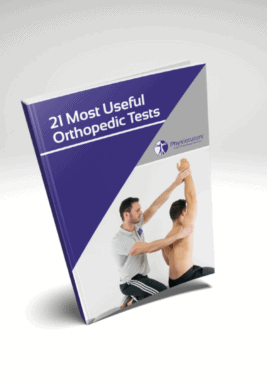Learn
Jerk Test Knee | Anterior Cruciate Ligament Tear
Hughston et al. (1976) proposed this test in a series on the classification of knee ligament instabilities. The jerk test aims to test the integrity of the anterior cruciate ligament along with the anterolateral compartment of the knee. It can be seen as a pivot shift test in reverse as the stressing movements are done in the opposite order.
The test has not undergone diagnostic accuracy assessment thus the clinical value remains questionable.
The test starts with the patient in supine lying position, the hip flexed to 45° and the knee flexed to 90°.
Use one hand to apply internal tibial rotation and place the other hand over the proximal tibial plateau and fibula and apply a valgus force to the knee.
The knee is then slowly extended. The test is positive if there is a sudden acceleration or Jerk during the movement usually at around 30° of flexion characterized by the anterior subluxation of the lateral tibial plateau. The tibia will suddenly reduce again when the knee reaches full extension.
21 OF THE MOST USEFUL ORTHOPAEDIC TESTS IN CLINICAL PRACTICE

Other common tests to assess for an ACL tear are:
References
Like what you’re learning?
BUY THE FULL PHYSIOTUTORS ASSESSMENT BOOK
- 600+ Pages e-Book
- Interactive Content (Direct Video Demonstration, PubMed articles)
- Statistical Values for all Special Tests from the latest research
- Available in 🇬🇧 🇩🇪 🇫🇷 🇪🇸 🇮🇹 🇵🇹 🇹🇷
- And much more!








